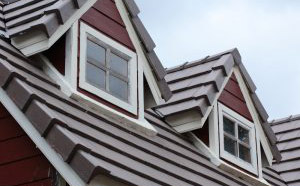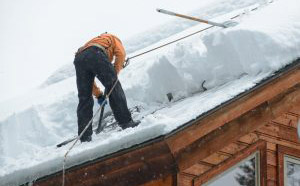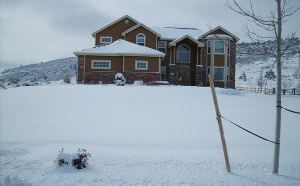HOME REPAIRS THAT SHOULD BE FIXED IMMEDIATELY
January 11, 2020
WHY METAL ROOFS HAVE BECOME SO POPULAR: WHAT YOU NEED TO KNOW
January 13, 2020According to the American Red Cross, the frequency of house fires increases in the fall and winter. December and January are the months when residential fires occur the most often. In fact, the average person will deal with at least five fires in their lifetime. While most fires in the home are small and easily contained, they still cost over $7 billion each year in property damage. The good news is that most household fires are preventable. To help protect your home from fire, follow these simple tips.
Space Heater Precautions
Many homes, especially older houses built before energy efficient materials were available, have cold spots that furnaces may not reach. People who live in homes with cold spots often use portable plug-in heaters. However, portable heaters are one of the leading causes of house fires in the country. That does not mean you shouldn’t use space heaters, but you should follow some safety rules. Keep heaters three feet away from flammable items and plug the heater directly into an outlet, not an extension cord. Turn the heater off when you are sleeping as most space heater accidents occur when the heater is unattended.
Practice Cooking Safety
Unattended stove top cooking is another leading cause of residential fires. Most cooking fires happen in the first five minutes of cooking, and although it may be tempting to walk away from the stove, it is critical that you remain within reach of anything you are cooking should a fire develop. If you are baking, it is okay to leave the kitchen, but check back often. Be sure that flammable items like dish towels, paper towels or oven mitts are at least three feet from the stove. If a fire develops, turn off the stove, cover the pan with a lid and let it cool. Do not try to move the pan until it is cool to avoid spilling the contents. Keep a fire extinguisher near the stove at all times and it is a good idea to invest in elbow-length fire-resistant cooking gloves.
Reduce Use of Extension Cords
Extension cords can be very helpful when your cord does not quite reach the outlet. However, we tend to plug too much into extension cords, a problem that is especially frequent during the holidays. Overloaded or damaged extension cords cause 3,300 fires each year. Touch each extension cord. If it is warm, it is overloaded. Never run extension cords under rugs or across travel paths. It is also not recommended that you tape them to floors and never staple or nail them. Do not string several short cords together to make one long cord.
Avoid Fireplace and Wood Stove Fires
There is nothing more satisfying than a hot fire on a cold winter’s night or the glow of a wood stove when the weather outside is nasty. To avoid a fire getting out of hand in a fireplace or wood stove, have your chimney inspected several times each year. Be sure to put out any fires in fireplaces before you leave the house or go to bed. Keep flammable objects at least five feet from both fireplaces and wood stoves. Embers can smolder for up to two weeks, so be sure to empty ashes into a metal container and store them away from anything flammable for at least two weeks. Clean the fireplace and flue at least once each year.
Candle Safety
Candles have grown in popularity over the past few years but so have fires caused by candles. From 2009 to 2013, candles caused three percent of household fires. Never light candles sitting on tablecloths or near curtains. Only place lit candles on sturdy, stable surfaces away from children and pets. As candles soften, a hot candle can tip out of a holder, igniting things around it which is why you should never burn candles unattended. If possible, switch to electric candle warmers or battery-operated candles with scent.
Christmas Tree Precautions
Although it is more common for a live tree to cause a fire at Christmas time, artificial trees can also develop problems that can lead to fire. Check all bulbs and wires for damage before plugging them in. Do not use the old bubble lights on your tree even if they have been handed down through generations. Bubble lights are five watts each, so even if you only have 100 lights, that’s 500 watts of heat on a tree. Keep trees away from open sources of flame and do not overload sockets.
In addition to these tips to avoid house fires, be sure to install and maintain smoke detectors in your home. Learn how to use your fire extinguisher before there is a fire and create an escape plan with your family. Practice escaping the house using various escape routes as well. For more information on fire safety, contact us by phone at 215-322-0110 or visit us online.


